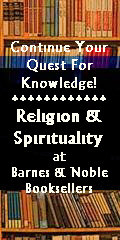
May You Be Blessed by the God of Your Heart |
The Geography of Christianity
 Roman Catholicism Roman Catholicism Eastern Orthodoxy Eastern Orthodoxy Protestantism Protestantism
The Essentials of the FaithFounded: Christianity was traditionally understood to be founded by Jesus of Nazareth. Paul of Tarsus, after his conversion on the road to Damascus, worked tirelessly to establish Christianity among both Jews and God-fearing Gentiles of the Diaspora. Clues in the New Testament indicate that there was a significant rift between Paul and the Jewish leadership early in the history of the Church. It is primarily Paul's writings which has most influenced the Church today. Adherents: Christians span the globe and are present on all the inhabited continents and in most of the world's societies. As Christianity is a universalizing religion, it embraces all nations and peoples. Distribution: The distribution listed for all Christians is given as follows from Markham, pp. 356-357:
Major Teachings: Most Christian denominations and sects teach that man is sinful and can never inherit eternal life in the presence of God as a result of the sins of our first parents, Adam and Eve, as well as our own personal sin. It thus became necessary for God to become man in the person of Jesus Christ (known as the Incarnation), who as the Son of God was sinless and unblemished. His purpose was to suffer and die in atonement for the sins of all who accept his sacrifice for sin. Individual salvation is dependent upon the acceptance of this atonement. The Church is the Bride of Christ whose purpose is to spread this message, "the Gospel", to all people before Christ's return to the earth to rule all nations as the heir to the throne of David. This is primary message of most Christians. Other sects will have variations on this message, and may include many other doctrines they find necessary to their own message or purpose.
As of 1986, at least one book of the Christian Bible has been translated into 1,848 languages of the world. A book has been compiled by the United Bible Societies which lists languages alphabetically, chronologically, and geographically (and includes maps). Of the present missionary efforts by many of Christianity's sects, biblical translation is just one of many. Symbols: The most well known symbol of Christianity is the cross, or crucifix, symbol of the death and resurrection of Jesus Christ. An ancient symbol of Christianity is the fish formed by two intersecting arcs. Often the Greek word for fish, IXTHYS, appears within being an acronym for "Jesus Christ God's Son". Major Divisions: The three major branches of Christianity are Roman Catholicism, Eastern Orthodoxy, and Protestantism. There are, arguably, other sects such as Mormonism claiming this distinction due to major departures from orthodox doctrines. Major Holy Days: Although the differing divisions and sects of Christianity may celebrate differing holidays, place emphasis on certain holidays rather than others, or may use a differing calendar, the major holy days of Christianity are: Lent (40 days of preparation for Easter), Easter (the resurrection of Christ), Advent (four week preparation for Christmas), and Christmas (the birth of Jesus Christ).
The Details about Christianity
Several important church councils were held during this time period to decide on controversies over doctrine. Eventually, the decisions of these councils provided guidelines to determine orthodoxy or heresy. The many divisions and sects now found in Christianity today has been the result of opinions which differed from the established doctrine. Some of these are discussed in the following webpages.
The Geography of ChristianityChristianity has greatly influenced the geography of medieval Europe, and later, the rest of the world due to colonization and missionary efforts. Perhaps the most significant contribution of Christianity was the reorganization of Europe from pagan bands and villages into the centrally organized holds of feudal Europe. This reorganization was patterned after the ecclesiastical hierarchy envisioned by the Church and set the stage for all that was to come in the future.
Also important in the geography of Christianity is the spacial distribution of the various denominations, each denomination's geographic divisions, and what effects each denomination has upon the land. For example, many new Protestant sects such as the Shakers experimented with new communal living arrangements in a quest for utopia during the first part of the nineteenth century. Although most of these efforts eventually failed, they created intentionally designed settlements of farms and workshops expressing new cultural and societal ideals. Roman Catholicism and Mormonism express their ecclesiastical geography through dividing the world into a hierarchy of areas. Catholics and many Protestant groups have missionary territories throughout the world.
ReferencesMarkham, Ian S., (Editor), A World Religions Reader. Cambridge, MA: Blackwell Publishers, 1996. Mead, Frank S., Handbook of Denominations in the United States. Nashville, TN: Abingdon Press, 1985. An excellent guide! Now available in a newer edition. United Bible Societies, Scriptures of the World. Stuttgart, 1987. A newer edition now exists listing more than the 1,848 languages of this edition. This and other low price texts may be ordered from: The American Bible Society, 1865 Broadway, New York, NY 10023.
Links for More InformationResource Pages for Biblical StudiesBible Gateway (with searchable Bible) Goshen Study Tools (neat stuff to aid Bible study!) Wesleyan Christian Texts Links Charles University Christian Texts Links SJU Hill Monastic Manuscript Library St. Augustine (texts, biography, analysis of an influential writer) The American Bible Society ABS' Book of 2,000 Tongues Project (the Bible in 2,000 languages)
After Viewing This Page, You Can Now Link to the Website Pages on... Roman Catholicism Roman Catholicism Eastern Orthodoxy Eastern Orthodoxy Protestantism Protestantism
Return to The Geography of Religion Menu Page |
